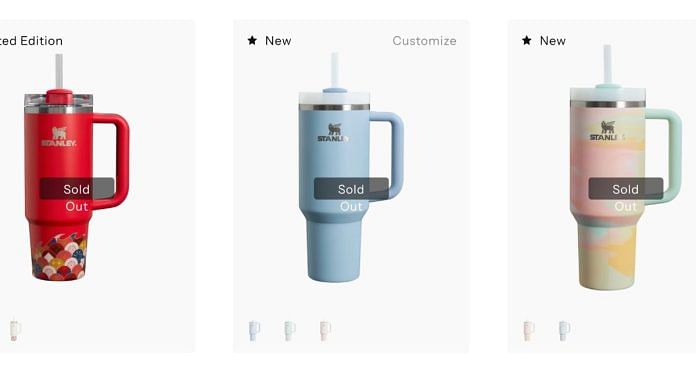If you think the act of drinking water is just for hydration, you’re sorely mistaken – in the modern age of TikTok, X, and Instagram, how you drink water and what you drink it from is nothing less than a marker of social status. And the winner was the chic, powder-finish, double-insulated, and, sadly, lead-laden tumbler that is the Stanley Cup—until now.
Recently, Stanley’s ‘Tumbler No. 1’ status seems to be on shaky ground. Consumers armed with at-home lead testing kits are startled that their expensive cups contain the toxic metal. The company has admitted on their website that while the cups contain lead, it’s sealed and will only be exposed if the base cap “comes off due to ordinary use”. The casual admission is incongruent with the effects of long-term lead exposure which can cause problems like high blood pressure, cardiovascular diseases and even neurological issues in children.
Everyone from The Washington Post to Bon Appetit is weighing in on the safety of the Stanley Cup, and the consensus seems to be that the fears are overblown. But then, social media is a fickle friend, and the cup’s cult status can be toppled like a house of cards.
Also Read: How TikTok’s unorthodox advertising attracted social misfits and weird niche subcultures
Women-led marketing
Stanley cups are all the rage on social media—from numerous ‘a day in my life’ Tiktokers to British musician Adele. Everyone is obsessed with these gigantic tumblers called ‘Quenchers’, which hold up to 40 ounces (1.1 litres) of water. For clarity, doctors recommend at least 2 litres of water a day, so you would only need to fill your Stanley twice to last you through the day.
The stainless-steel reusable cup is supposed to reduce wastage and encourage sustainability but its social media stardom, led by marketing by and to (mostly white, millennial) women, has ensured the Stanley Cup becomes the number one aspirational gizmo. Consumers line up to buy new editions of the $45 tumbler (Rs 3,700), resell it for twice as much on online platforms, and proudly display their endless collection of Stanleys in different colours. Way to go for sustainability!
A few months ago, a woman posted a video on TikTok of her burnt car, where the only survivor was her Stanley Cup with ice still inside it. Jumping on the opportunity, the CEO of Stanley, Terence Reilly posted his own video offering to replace her Stanley as well as her car — a masterclass in marketing. It gained Stanley many fans worldwide.
Many of the self-proclaimed ‘Stanley Cup girlies’ are shaken by the company’s admission but it’s yet to be seen whether this lead-gate will be Stanley’s downfall or not.
Also Read: Peeling an orange is the internet’s test for lovers. It’s onto something big—little things
Long live consumerism
What is clear, is that consumerism is not dying. When Stanley’s lead gate happened, Hydroflask—a similar reusable water container that was wildly popular among teenage girls—posted on social media reassuring its users that they don’t use any lead in the process. It’s the beginning of a brand war.
As quirky and clever as these marketing campaigns are, there’s something ironic about how the cult status of these products fundamentally alters their original purpose.
Reusable water bottles are an environmentally conscious choice, but people buying hundreds of plastic bottles are wasteful both environmentally and monetarily. When brands and in turn users themselves encourage rampant consumption of what is supposed to be a ‘one-time purchase’ it loses all meaning. The USP (unique selling point) of a Stanley or a Hydroflask no longer remains the use that it serves, but the status that it brings with it. It’s been dubbed the Louis Vuitton of drinking cups. The ‘Limited edition Valentine’s Day bottle’ and ‘customisable’ Stanleys contribute towards a culture of fast consumption—the exact opposite of what the sustainability movement stands for.
This isn’t entirely the brand’s fault though—people have contributed to an endlessly consumerist attitude. ‘Trend’ culture rules social media. Be it memes, theories, challenges or products, our attention spans seem to have modified to accommodate something for only a little while. And just like the Bath & Body sanitisers, EOS lip balms or even beanie babies, the Stanley Cup trend will die out. But sustainability never catches a break, there’s always the next new trend waiting in the wings.
Views are personal.
(Edited by Theres Sudeep)



